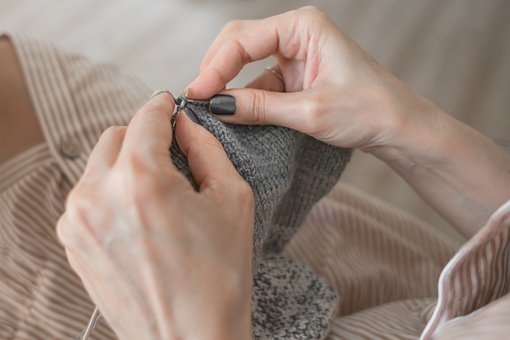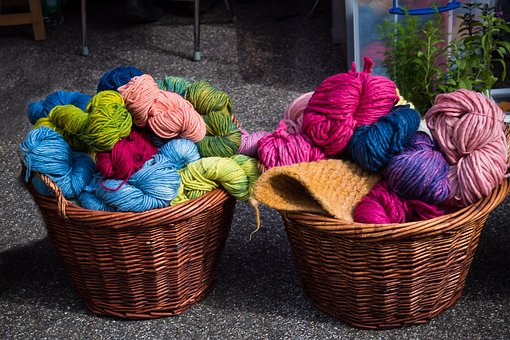Did you know that there are different types of knitting?
Should I rather say there are two main styles of knitting and I am going to make a study of both of them, even though I have always done the English Style. When I started this website a few years ago, I found out that there is also a different type of knitting style called the Continental knitting style. I of course tried it but found it extremely difficult after being trained in the English style, but it must be wonderful to master, as it is so much quicker.
In fact, it may even be helpful to learn both different types of knitting for various reasons, including the fact that your joints can take a break from one repetitive knitting style while trying the other. I had tennis elbow from knitting last year, so it would have been good if I could carry on with continental-style knitting while I was healing.
There are of course other less popular styles of knitting like Portuguese, combination, and even lever knitting, but in this post, I am going to discuss the two main styles of knitting namely English and Continental.
Different Types Of Knitting
English Knitting
The most popular style of knitting seems to be the English knitting style. It is sometimes also called American knitting or throwing.
It is generally believed to be the neater style of knitting, as it is easier to control the tension of the wool.
English knitting involves holding the yarn in your right hand and “throwing” it over the needle to form the stitch.
Because this form of knitting can be exaggerated, most people and beginners start to learn to knit with this style of knitting.
Although the English style is used in most English-speaking countries, it is also a very popular style in China.
Continental Knitting
Continental knitting is also known as German knitting or picking and is popular in northern and eastern Europe as well as other parts of the world where people from those locations have settled.
It is believed that Continental knitting was started in Germany and is even favored in Japan. It did lose some favor during World War 2 because it was associated with Germany.
Many crocheters prefer working with Continental style knitting, as they are used to working with one hand. Most people who crochet and then learn to knit say they prefer the continental way.
In this style of knitting, the yarn is in the left hand and a subtler movement of the left index finger (and sometimes other fingers as well) is used to help the needle pick up the yarn and form a new stitch.
Despite, the speed associated with Continental knitting, due to the angle of picking the yarn, purl knitting is more difficult using the Continental style. The reduced movement required means that Continental style knitting is better for anyone who suffers from repetitive stress problems like tennis elbow.

Summary Of The Differences – English vs Continental Knitting
- With English knitting, you hold the working yarn in your right hand, while with Continental knitting you hold the working yarn in your left hand.
- In English knitting, new stitches are created by “throwing” or “wrapping” the yarn around the right needle. In Continental, knitting new stitches are created by “picking” or “grabbing” them with the needle.
- Continental knitting is generally faster than English knitting, mainly because it requires smaller hand movements.
- The English knitting method can feel more natural for right-handed knitters, while the Continental method can feel better for left-handed people or crocheters.
- It can be easier to maintain your tension using the English method, as your fingers are throwing the yarn instead of carrying it. This can make it simpler for new knitters to learn.
So Which One Is Better?
I haven’t seen much difference in the quality of the work produced using both styles.
Continental knitting is believed to be the quicker method of knitting, but I suppose it all depends on which method you are used to.
Continental knitting is also great for the left-handed person, but as you need both hands to knit, I don’t think that it makes that much of a difference.
Even if you’ve been happily knitting in English or continental style for a long time, it’s worth it to learn the other method or to try one of the lesser-known styles.
For one thing, you can alternate knitting different ways on different projects, reducing hand and arm strain, in the long run.
Being able to knit both ways is also really great when you’re working with two colors of yarn in the same row. You can knit with one color in your right hand and one in your left and speed through the process without having the swap out yarns or deal with a big twisted mess at the back of the work.
It’s also fun to experiment, and who knows you may just develop a love for a new knitting style.
Here is a video that you can watch so that you can see the difference between the two styles for yourself.
